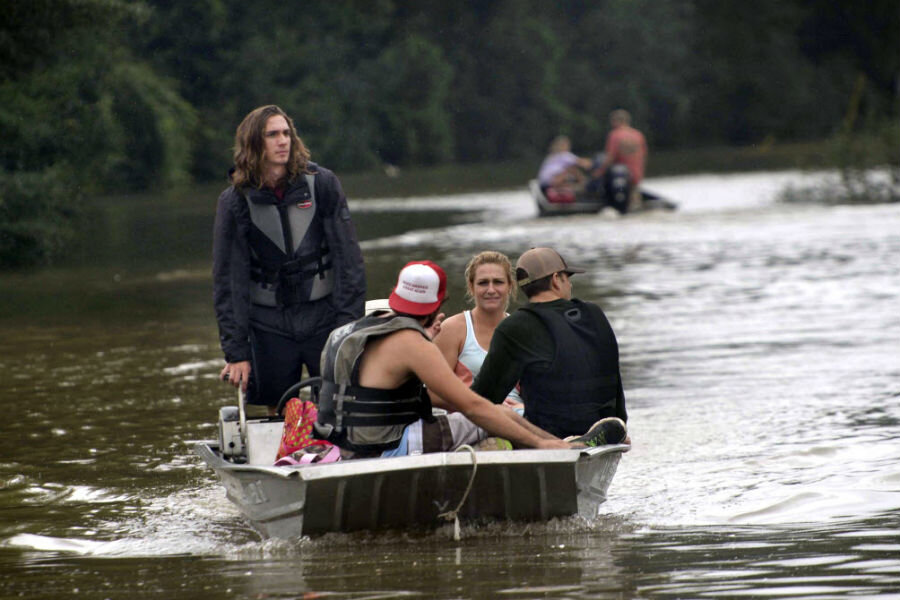Volunteers flock to Louisiana in wake of 1,000-year flood
Loading...
The historic storm that took the lives of at least seven people in southern Louisiana has moved on to Texas and is now heading into the Midwest, as Louisianans work to reduce the damage done by flooding.
Parts of southern Louisiana received as much as 25 inches of rain over the weekend, an unprecedented amount of rainfall. The chances of 25 inches of rain falling in any given location over the course of a year is .1 percent, according to meteorologists. In other words, it's likely to occur only once every 1,000 years.
As of Monday, thousands of National Guard personnel had rescued nearly 3,400 people and 400 pets and distributed more than 600,000 sandbags, nearly 96,000 bottles of water, and 2,300 ready-to-eat meals, ABC News reported. More than 20,000 people had to be rescued in total, according to the Associated Press.
The ongoing rescue efforts have been aided by a number of volunteers, including Sandra Sterling, the aunt of Alton B. Sterling, the man whose death at the hands of Baton Rouge police resulted in weeks of protests.
"When my nephew got killed ... we had a lot of people come out to support him," Ms. Sterling told a reporter for Baton Rouge's KSLA News on Sunday as she boarded a rescue boat. "This is my giving back. I want to help as many people as I can get out."
As some volunteers, such as Sterling, go out in boats in search of stranded people, others have been dropping off food and supplies at shelters.
"I'm very proud of the effort that we're making. More than anything else, I'm proud that Louisianians are taking care of their own and people are being neighbors to one another," said Gov. John Bel Edwards, as reported by the Associated Press.
Floodwaters crested and slowly began to recede late Monday night, though southern Louisiana still faces continued flood warnings Tuesday.
Meanwhile, the storm system has moved west into Texas, with flood warnings throughout the southern and central areas of the state. The storm has also begun to make its way into the Midwest, with flash flood watches in parts of Michigan, Indiana, and Illinois, according to the National Oceanic and Atmospheric Administration.
For residents of areas that may be affected by flooding, the American Red Cross recommends packing an emergency kit with three days worth of food and water, a flashlight, battery-powered radio, a First Aid kit, and other necessities. Keep track of weather reports on local radio and television stations, and be prepared to evacuate if necessary.
If flooding does occur, head for higher ground and avoid floodwaters, whether on foot or in a vehicle.






